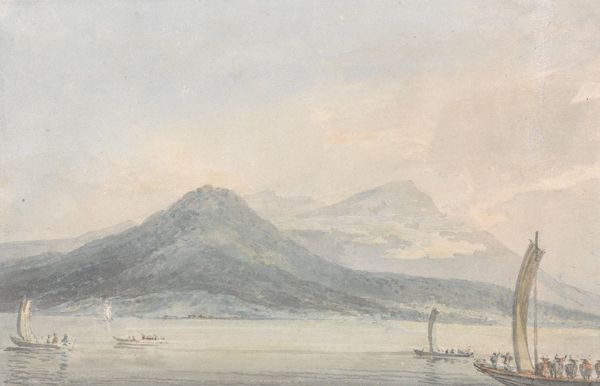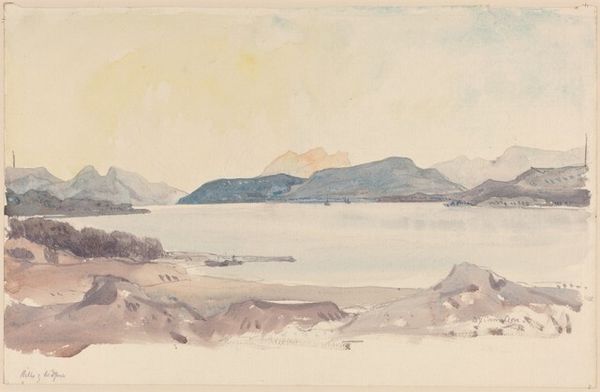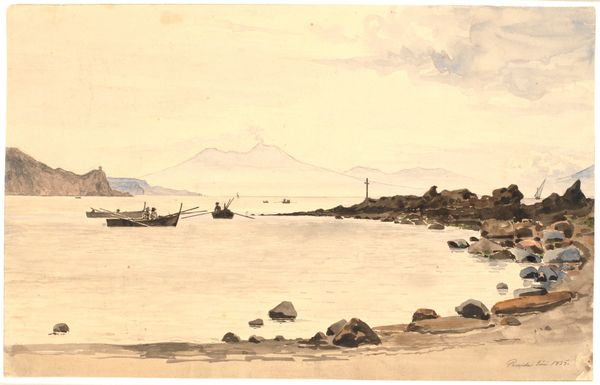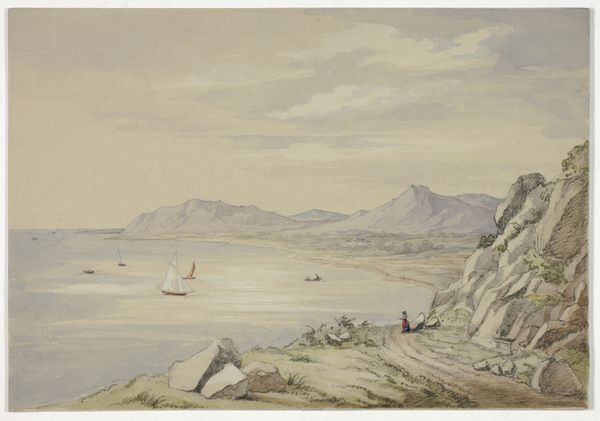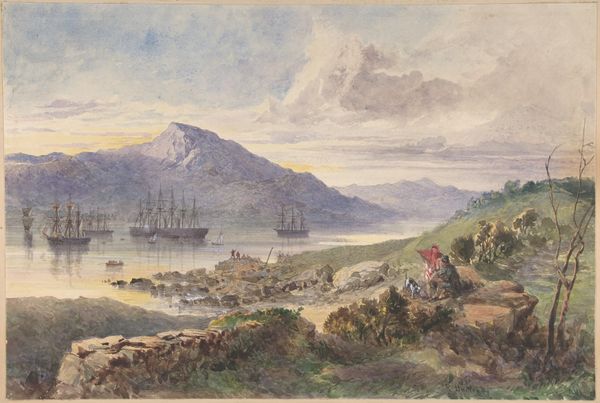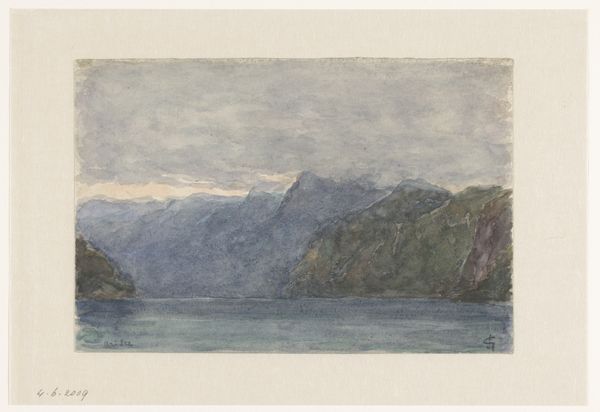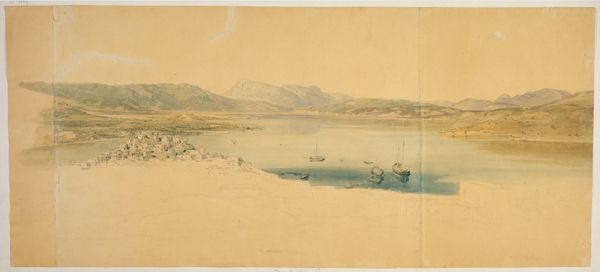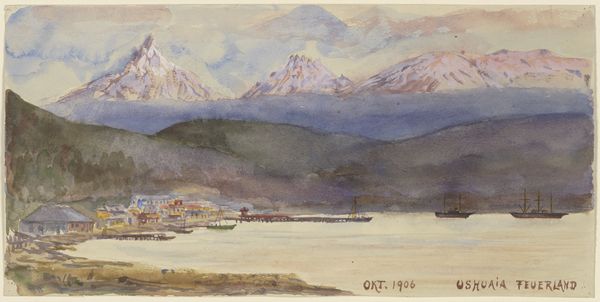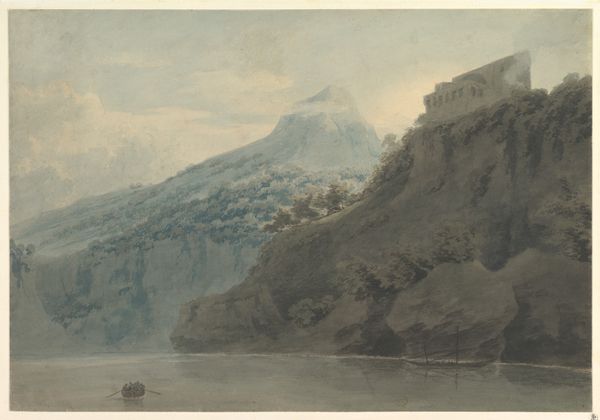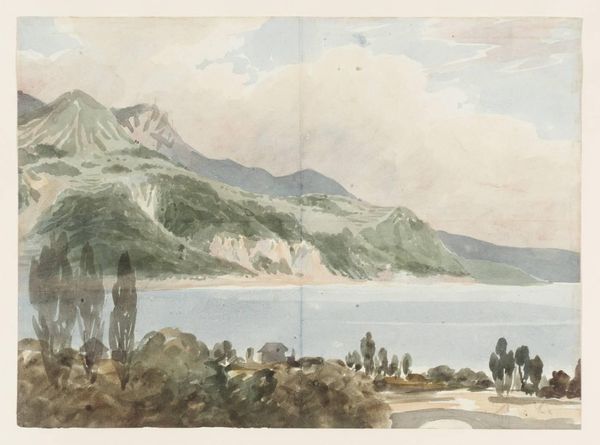
drawing, print, watercolor
#
drawing
#
boat
# print
#
landscape
#
watercolor
#
romanticism
#
watercolor
Dimensions: 7 3/16 x 13 1/2 in. (18.3 x 34.3 cm)
Copyright: Public Domain
Curator: Let's discuss Thomas Miles Richardson's watercolor from the 1830s, "Isle of Arran, Early Morn." Editor: Right, my first thought? The air is almost see-through! It’s like looking through a veil, all soft blues and greys. Peaceful, but almost…vanilla? Curator: It's certainly understated. Richardson was working within a well-established Romantic tradition. This was a period of fascination with the sublimity of nature, the wildness of places like the Scottish Isles offered an escape. Notice the brushwork, how he layers the watercolor. Editor: Yes! That layering is key. It’s not just documenting the view, is it? It’s about atmosphere, and a certain…longing? Maybe even a bit melancholic? Makes you think about what's beyond the horizon, you know? Curator: I see what you mean. The early 19th century witnessed significant social and economic shifts, the rise of industrialization transforming landscapes and societies. Images of serene natural landscapes, like this view of Arran, can be understood as a visual retreat, idealizing rural life. Editor: I didn't know the Scottish Highlands was such a popular tourist spot at that time! Look, there are little fishing boats, bobbing like corks. Do you think he set up his easel right there? Curator: Well, watercolor was popular for sketches en plein air. And while we can never be completely sure of the context, images such as "Isle of Arran, Early Morn," contributed to popularizing the Scottish Highlands. You also must know about how this kind of pictures shaped the public’s understanding of national identity, romanticizing the region as pristine and unspoiled, ignoring the real-life effects that this perception would have. Editor: Absolutely, its effect goes further. I find something appealingly timeless. Art captures moments and tells bigger tales too, eh? It invites you to think, to daydream, and find beauty in even the quietest mornings. Curator: I agree. These glimpses into the past offer such complex narratives for us to unpack. It's never just about what you see. Editor: Exactly!
Comments
No comments
Be the first to comment and join the conversation on the ultimate creative platform.

